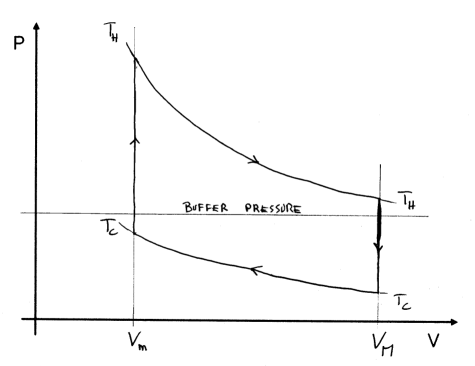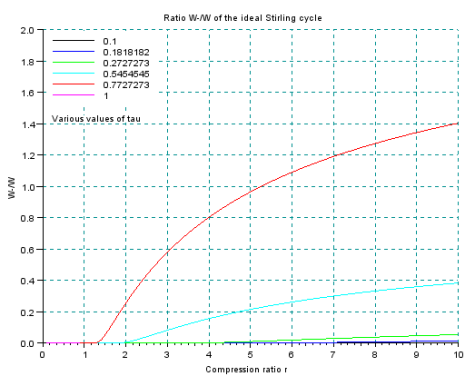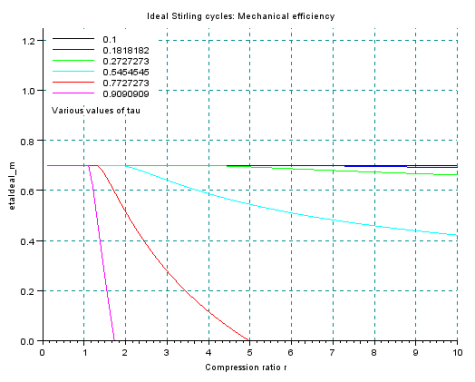| Home |
| Stirling Engines |
| State of the Art |
| Theory |
Theory 4 - Optimal buffer pressure of the ideal Stirling Cycle
Ideal Stirling cycle
The ideal stirling cycle is composed of two isotherms (at Th and Tc) and two isochore transformations (at Vmin and Vmax).
Two important parameters are:
- The temperature ratio: τ = Tc / Th
- The volume (compression) ratio: r = Vmax / Vmin
Type of ideal cycles
For ideal Stirlings they are two main classes of cycles:
1) the efficacious cylce
For a given range of buffer pressures, the whole cycle can be performed without any work taken back from the energy buffer (flywheel) to the mechanism (W- = 0). This case occurs when τ*r < 1

2) the non-efficacious cylce
For any buffer pressure the energy buffer has to give back some work to the mechanism during some part of the cycle (W- > 0).
This case occurs when τ*r > 1

Optimal buffer pressure
For the efficacious cycles the optimal pressure is any value within the range where W- = 0
According the the mechanical efficiency Emeca defined previously we get
Emeca_efficacious = E
For the non-efficacious cycle we can define an optimal buffer pressure resulting in the highest overall work production. We can show that this pressure corresponds merely to the mean cycle pressure. Fortunately, due to leaks, a steady stirling will adjust its internal mean cycle pressure to the buffer pressure, i.e. it will adjust itself to the optimal working conditions depending on the buffer pressure.
Using the law of ideal gas we can deduce the parameter W-/W for any optimally buffered stirling cycle:

Here are some curves showing W-/W versus compression ratio r for various temperature ratio τ

With these curves of W-/W and the general mechanical efficiency equation (see previous chapter) we can get the mechanical efficiency of an non-efficacious ideal engine with optimal buffer pressure:

Following graph shows the result for a constant mechanism effectiveness E = 0.7:

|
Theory index Theory 1 - Generic
schematic |